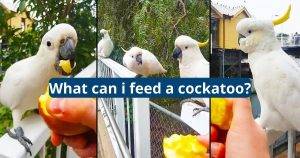How Big is a Macaw?

Macaws are renowned for their vibrant plumage, large hooked beaks, and loud raucous screaming. While traditional macaws can be too big for many families, smaller varieties known as mini macaws make great pets. Macaws normally weigh two to four pounds, making them fairly hefty birds. The largest species, the hyacinth macaw, can reach lengths of nearly three and a half feet from beak to tail with an impressive wingspan of up to 60 inches.
Hyacinth Macaw
Hyacinth macaws are among the largest birds in the world, with a wingspan of up to 4 feet. They’re highly intelligent, even-tempered birds that make loving companions with their humans. Their lifespan is typically 50 years, although they can live shorter lives in captivity. Providing them with an adequate diet, a safe habitat and space for their wings to stretch out is essential for their well-being.
The iridescent blue feathers of this bird are offset by the sleek black of its wings and tail. They also have bright yellow feathers that ring around their eyes and at the base of their beaks. This macaw species nests in pre-existing holes in trees and lays two to three eggs. Like other parrots, it can mimic human speech. Its strong bite allows it to break open coconuts and large brazil nut pods. It can also disperse the seeds of the Manduvi tree, which is one of its favorite homes, by eating them.

Blue-and-Gold Macaw
The Blue and Gold Macaw (Ara ararauna) is a beautiful parrot native to tropical South America. It is a very large bird with an average body length of 3 feet and a wingspan of over 4 feet. Its name reflects its blue and golden yellow body color.
They are intelligent birds that can learn to talk. They communicate by cocking their heads, vocalizing and flashing their eyes (a voluntary constriction of the pupils). They can also use fluffing of feathers, raising of wings, prancing, bowing, head shaking and shaking tail feathers to show their emotions or intentions.
In the wild, they live in seasonally flooded forests and forest edges with palm swamps. They can also be found in gallery forests along streams, savannahs with scattered trees and in deciduous woodlands. Blue and Gold Macaws are very social birds that are often kept as pets. They reach reproductive age at 3 to 4 years and breed monogamously.

Green-winged Macaw
The Green-winged Macaw is arguably the most impressive of all macaws. They are smart, playful and incredibly entertaining. They have the intellect of a three year old child and can be taught to talk, solve puzzles and perform tricks. However, they require a lot of attention, energy and training. They also have a powerful beak, which can generate a bite force of 500 up to 2,000+ psi. This makes them a risky choice for people who have not had experience with large Parrots and may not know how to handle them.
In the wild, Green-winged macaws are found in pairs or small family groups and sometimes in larger flocks at clay licks where they gather to consume mineral sands. They are monogamous and mate for life.
In captivity, Green-winged macaws need a spacious cage and regular supervised out-of-cage exercise sessions. They eat a variety of fruits, seeds and nuts and should be fed a fresh diet every day. A constant supply of gnawing branches and toys is also important for their mental and physical stimulation.

Harlequin Macaw
The Harlequin Macaw is a hybrid of the Green-winged Macaw and the Blue and Gold Macaw. They tend to be docile birds with fun, comical personalities. They make good pets for beginners as long as they are socialized with people from an early age. Otherwise, they may become one-person birds and exhibit typical macaw behavior like getting cranky or biting.
These beautiful birds can live up to 80 years and require a serious commitment from their owners. Provide them with a large cage and plenty of time to play outside of it for mental and physical stimulation. They need to be able to stretch their wings and not feel cramped. Feed them a balanced diet of fruits, vegetables, pellets, seeds and spray milllets. Their bright coloration depends on the father: Green-winged Macaw fathers produce offspring with light orange breasts, while those with Blue-winged fathers have more vibrant orange-red breasts. Both types have vibrant green and blue backs with golden-yellow tail feathers and orange-red heads.





